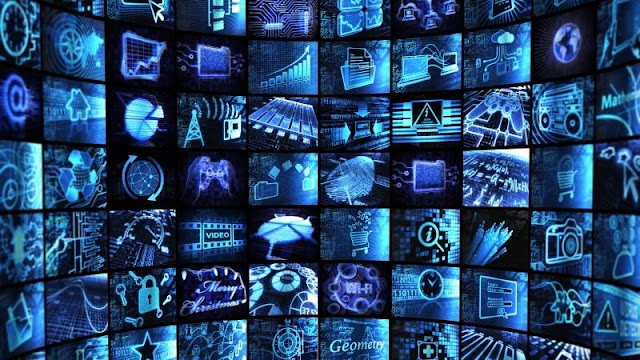TAG | iot
12
Lighting industry needs to ‘wake up’ to IoT hack threat
Comments off · Posted by admin in LED
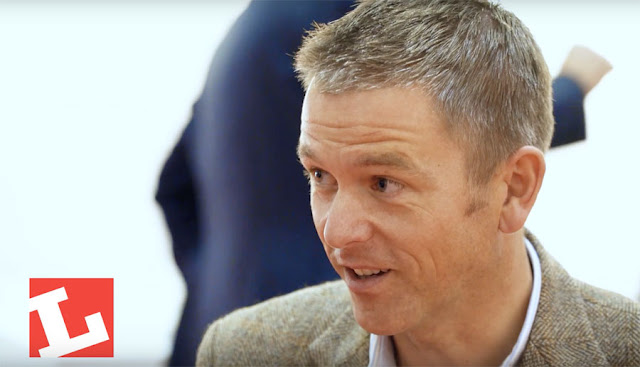 |
| Ken Munro, the UK’s leading ‘ethical hacker’ speaking at this year’s LuxLive |
connected home technologies · connected lighting · internet of things · iot · iot security · led lighting · Novel Energy Lighting · trojan horse
Hackers harnessing Internet of Things (IoT) devices, including smart lights, have crashed some of the world’s biggest websites including Spotify, PayPal and Twitter.
It is no secret, as revenues from LEDs fade, that the lighting industry is placing a big pile of gambling chips on the success of the Internet of Things, but the hack marks the second major security breach in as many months, suggesting IoT is not yet ready for the big leagues.
A handful of the world’s top websites were targeted during the attack, including The New York Times, CNN and Amazon, making this the most high profile attack to date and one aimed at disrupting the very fabric of the internet in the United States.
The attack was carried by hijacking thousands of IoT devices, which had previously been infected with malicious code allowing attackers to take control of them. The attackers were then able to perform a denial of service (DDoS) by getting the enslaved devices to flood the chosen websites with messages, causing them to crash.
While a claim of responsibility is yet to be made for the attacks, it has been claimed on Twitter that WikiLeaks were responsible.
A tweet issued by WikiLeaks after the DDoS attack on some of the world’s leading websites.
Earlier in the month American internet provider OVH was targeted in an attack that involved the manipulation of 150,000 IoT devices.
‘Companies are simply not doing enough to improve IoT security and there is a lack of awareness and a certain laziness in their attitude towards the issue,’ Ken Munro of ethical hacking firm Penetration testing and security services, which identifies weaknesses in internet security, told Lux.
‘Companies are simply not doing enough to improve IoT security and there is a lack of awareness and a certain laziness in their attitude towards the issue.’
The IoT powered onslaughts are worsening because of the release of the Mirai botnet source code into the public domain. The code contains the necessary information needed to hack into IoT devices and ultilise them for use in DDoS attacks.
Security experts are worried that IoT devices are being built upon outdated operating systems using code that has not been properly tested for security loopholes, which hackers will exploit. The devices are then being rushed to market.
Munro believes that IoT manufacturers need to act now to prevent much more serious security breeches in the future.
‘Governments are becoming more and more concerned about the security risks that IoT poses, and the UK, US and EU governments are even considering legislation to compel firms to act,’ Munroe concluded.
The US Congress, for example, is currently mulling installing some kind of consumer protection into law to protect IoT consumer’s privacy, although talks are still at a very early stage, calls to act though are likely to speed up after this latest attack.
ddos · internet of things · iot · iot security · led lighting · Novel Energy Lighting
iot · led lighting · lighting iot · Novel Energy Lighting · smart lighting · vatican lighting
EU pledges millions to tackle IoT security threat. PLUS: Reykjavik turns off street lights for better aurora view. AND: US speedway becomes first to go all LED. Lux Today October 18 2016
iot · iot security · led stadium lighting · led street lights · Novel Energy Lighting · smart led lighting · smart lighting
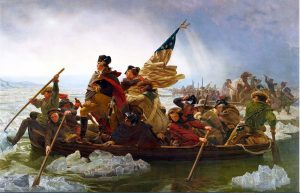
George Washington crossing the Delaware River during the American Revolution. Don’t be lulled into inaction like the British in Boston Harbour in 1773….IoT will be the next revolution in the lighting industry and you need to be prepared.
Gordon Routledge of Revo reports: The next revolution in lighting has arrived in the form of IoT (Internet of Things) and it’s going to change everything.
Ironically, I used to get exactly the same response when I spoke about LEDs some 15 years ago. Change takes time as Bill Gates once said:

I tend to be an early adopter of technology but sometimes I fail to spot the trend. I could not, at first, for example, understand YouTube. Why would you want to make your own video and share it on the Internet? Why would you want to watch that video on a tiny screen on a mobile phone, while sitting on a bus? Yet 11 years on Lux has its own YouTube channel, which has clocked up over 1.4 million views. This is, of course, quite pathetic, when placed in comparison with the multi-millions of views that funny cat videos attract.
The birth of YouTube came well before smartphones and high speed mobile connectivity, it needed some other megatrends to develop for it to rise to its full potential
Now, let’s get one thing clear, the term ‘smart’ is not a replacement for dimmable. Just because you can dim your lights with a smart phone does not mean that you are at the forefront of the IoT revolution. Instead IoT hides in various overused and sometimes difficult to understand terms, Connected Lighting, Smart Cities, LiFi and PoE, being just a few. These are the trends that are helping IoT to take off.
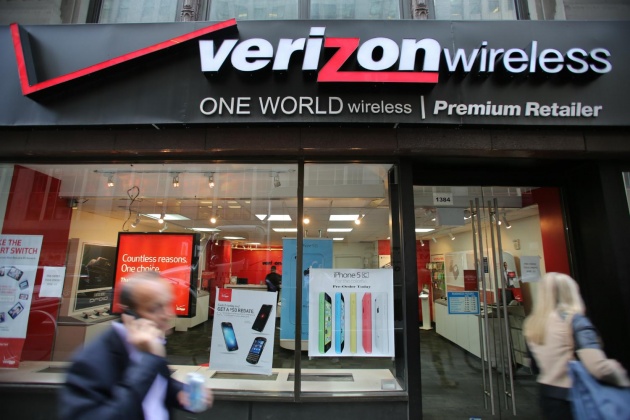
Verizon, the American communications company have bought Sensity in order to widen their IoT offering.
So why has the world changed this week? For starters Verizon, one of the world’s largest mobile phone operators, purchased Sensity Systems. Hugh Martin the CEO spoke at one of our conferences two years ago, his vision was simple, all lights are going to be replaced with LED over the next ten years, so, he said, when we do the conversion let’s pack them full of sensors, cameras and wireless networking devices and use the network to build new business apps.
It was jaw dropping for our audience at the time, but Hugh was right on the money. While Sensity’s gun shot detection app may not find a ready use in Europe, Verizon clearly see value in some of their products that they can offer to their millions of subscribers, leveraging the data collected by millions of lighting points.

The Amazon Echo, which allows users to switch on their lights with the sound of their own voice.
Next up, Amazon. The multi-billion-dollar corporation has added the ability to control lighting to its Alexa digital assistant. If you haven’t had cause to buy one yet, Alexa is part of the Amazon Echo, which is a smart speaker that is able to respond to voice commands.
For years we have talked about the death of the light switch and the reason given to prevent this is that people don’t want to reach for a smart phone in the middle of the night to turn the lights on, even though your smart phone is surely going to be closer to your bed than the nearest light switch.
The giving of verbal instructions could well be the true intuitive lighting control, but it won’t work for me, as my wife says I have a habit of talking in my sleep, and lighting is frequently the subject.

The Yellow Dot program allows manufacturers to develop LEDs that work with Philips’ indoor positioning technology.
Of course, Amazon won’t be making lights, although they do have their own brand, Amazon Essentials, so rule nothing out when it comes to anticipating the next move of this cunning company.
Amazon currently relies upon other manufacturers to make devices compatible with Alexa, such as LiFx smart lamps. If I made residential lighting controls I would be very concerned about this move. Lighting control is moving from the cupboard to being in the lamp, and the user interface is migrating from the wall plate to an Amazon owned device.
Finally, Philips has open sourced their light based indoor location system, which is perhaps a canny move for the future. Many smaller OEM’s can’t play in the IoT space and clients and designers will not want to be held to ransom in order to buy Philips fixtures to implement a system.
It also gets Philips away from the dirty business of having to sell rapidly commoditising fixtures. Instead they simply collect data from lighting and sell it on to the end user. Thus data starts to replace lamps as a continuous revenue stream.
These are, of course, just announcements from the last week. But if you throw into the mix Cisco and Acuity Brands buying tech companies with gusto and huge, but lesser known, companies such as Delta Electronics who snapped up Loytec Electronics earlier in the year, you start to realise that the stage is being set for a revolution.
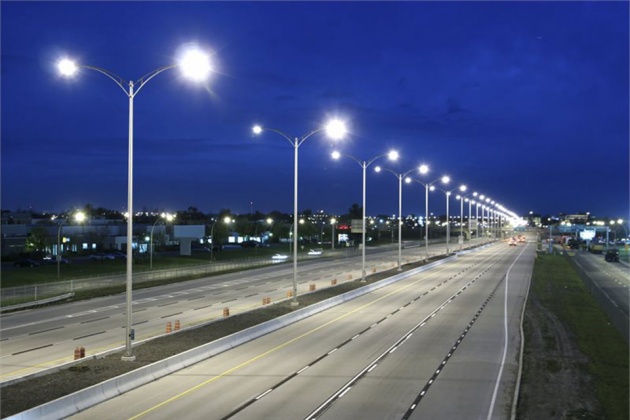
Big technology companies want to use the installation of LEDs to harvest as much data as they can.
It’s becoming clear that big technology companies want to be active on the lighting scene. They don’t want to join in our fun debates about standards, colour quality, lamp bases, glare and flicker though. All they want to do is gain access to the billions of lighting fixtures in the word and harvest the data they collect, enabling new business models to be built that don’t exist today.
You may not believe me, and I’m sure you can find hundreds of reasons as to why it just will not happen…but, read my lips, in ten years time IoT will be on everyone’s mind.
intelligent connected lighting · internet connected lighting · internet of things · iot · lux · Novel Energy Lighting
24
Philips Lighting @ L+B 2016 – Experience light beyond illumination
Comments off · Posted by admin in LED, Philips LED
Philips Lighting showcased truly pioneering lighting innovations at Light + Building 2016, the world’s leading trade fair for lighting in Frankfurt, Germany.
Philips brought together leading experts to inspire and engage fellow professionals as part of their speaker program at light+building.
Connected lighting in smart cities
Delivering smart buildings
New technology trends and their impact on LED luminaires
We’ve captured these insightful talks in a series of videos – so if you couldn’t make it to the show, here’s your chance to catch up on what you missed.
connected lighting · iot · LED technology · light and building 2016 · Novel Energy Lighting · philips led · philips lighting · smart buildings · smart cities
17
The Brave New World Of The Internet Of Things – The Technologies And Issues
Comments off · Posted by admin in Infographics, LED, Philips LED
The IoT, in which every device can communicate with every other device – even a smart bedcover can ‘talk’ with devices such as Philips’ Hue LED lighting system – is fast becoming a fact of life, like it or not. But how are the IoT technologies evolving, what are the benefits and how about the risks? And how about a wider context? James Hunt explains:

Mario Morales, IDC
The IoT is as of countless ‘things’ that are fitted with uniquely identifiable embedded devices that are wirelessly connected to the Net. These ‘nodes’, as the ‘things’ are called, can send or receive information without human intervention. The nodes can even be fitted to animals (to track or find them), and indeed to people and their clothes – for a variety of reasons we may or may not like.

To achieve this, every ‘thing’ – which could be an LED light source or luminaire, or thermostat, or an industrial controller, for example – must be uniquely identifiable through its embedded computing system, yet it must also be able to interoperate within the existing Internet infrastructure. Such devices are proliferating fast.
With its myriad such devices, including sensors and actuators that ‘talk’ to each other wirelessly and on the Internet, the IoT brings with it an astonishing ability to measure, monitor, and analyse data. This includes, for example, consumer behaviours and buying habits – and not just consumers either, as all businesses can benefit.
Such monitoring and analyses can be used to determine future product developments that will revolutionise the ways in which we live and do business. For the vast majority of homes – made ‘smart’ by IoT devices – everyday life will be enhanced by technology, particularly in terms of entertainment and comfort.
To take just one example – Google and Philips Lighting have got together for Nest Lab’s intelligent wireless thermostat and home automation devices to work with Philips’ Hue IP-connected LED lamps – OSRAM is in on the act too.
Connectivity is the word
When the IoT is augmented with devices such as sensors and actuators, it can then encompass increasingly important technologies such as smart homes, buildings, grids and cities, as well as intelligent transportation. These devices collect useful data with the help of various existing technologies and then autonomously flow the data between other devices – such as those that use Wi-Fi for remote monitoring. But how, in brief, does such connectivity work?
Firstly, there are several types of connectivity used by the IoT. These are:
* Personal Area Networks (PAN)
* Local Area Networks (LAN)
* Neighbourhood Area Networks (NAN)
* Wide Area Networks (WAN).
PANs and LANs are those that most domestic and small business IoT installations are likely to use directly and these are also the ones that the majority of electrical contractors and installers will be involved with.
Those IoT devices that use a PAN with a smartphone will use the smartphone as the gateway to the Internet (WAN). Devices in a smart home or automated building can connect to a LAN and find their way to the Internet too.
So IoT devices use, as the name implies, Internet connectivity, but smart devices that are part of an overall IoT can also use other enabling technologies, such as RFID and near-field communication (NFC), optical tags and quick response codes (a now common example is the QR Code) and a whole range of wireless (Wi-Fi) topologies. The latter include Bluetooth Low Energy, low energy wireless IP networks, ZigBee, Z-Wave, LTE-Advanced (high-speed communication specification for mobile networks) and Wi-Fi Direct (Wi-Fi for peer-to-peer communication without needing to have an access point (AP).
It remains to be seen if any one of these becomes pre-eminent.
Important IoT issues
Away from IoT issues that will affect electrical wholesalers, contractors and installers directly – as opposed to regulators, data centre developers and owners, specifiers and IoT / network device manufacturers – there are a number of problems that will need to be addressed to ensure successful wide-scale take-up.
For example, thousands of IoT devices signaling and sending data to each another take both CPU consumption and a surprising amount of energy. This costs money and has carbon emission implications, so IoT devices should use the minimum energy possible. Though this will not normally affect electrical distributors, contractors and installers, ultra-low-power wireless chipsets should be used in IoT devices and low power networks – such as Bluetooth low-energy, ANT, ANT+, ZigBee, ZigBee RF4CE, Wi-Fi, Nike+, IrDA and the near-field communications (NFC) standard.
Bandwidth take-up is another IoT connectivity issue. Bandwidth on a cellular (mobile) network is expensive, especially with hundreds of thousands of IoT devices sending request/response signals to a server – the result is that the server farm will need to be large enough to handle all the data. With the potential for many billions of devices (possibly even trillions longer term), this will be a huge problem that must be addressed.
Another issue is presence detection of IoT devices. This provides the exact state of all IoT devices on a network and shows immediately when any device drops off the network – or when it comes back on. In this way, the IoT devices can be monitored (and fixed if a problem occurs).
And for those IoT devices that ‘live on their own’ – such as trackers – the connectivity to the wider Internet can be tricky.
Finally, it is important to note that the Internet is not simply one network, and heterogenous networks, proxy servers and security firewalls can all disrupt connectivity. So a fully functioning, all-encompassing IoT is not with us yet as many issues need to be sorted. Even so, the vast majority of Voltimum users will not need to confuse themselves with this level of granularity – most already available smart devices they install for domestic use as part of the IoT will be simple to install and commission. They are already.
At light speed!
Although Wi-Fi has not been in the public domain for too many years – apart from computer routers – it is now an established means of data communication. It is fast and increasingly reliable. Importantly, it is quick and easy to install because expensive and disruptive hard wiring is not needed.
However, there’s a new kid on the block that is even faster – far faster – and it has its own set of advantage and disadvantages. Let’s look at it briefly here:
This important newcomer is Li-Fi, which has as its analogue Wi-Fi, but being based upon light (which travels at 186,000 miles/s) is very much faster – many times faster than conventional Wi-Fi – and possibly up to 10 times cheaper.
Li-Fi (or Light Fidelity) is a form of visible light communication (it can also use infrared and near ultraviolet). It is bidirectional and fully networked and has been described as a ‘new era of wireless connections’. With claimed speeds of up to 224 GBps (though mostly lower), this new technology could enable a high-definition film to be downloaded in seconds.
The change to Li-Fi, when it comes, will be driven mainly by the electrical and lighting sectors through LED lighting. Li-Fi will turn every LED lamp into wireless access points (APs), which effectively allows any user to move between sources without losing the connection. The LED lamps act as the medium to deliver networked, mobile, high-speed communication in a similar manner to Wi-Fi (but much faster). All this then becomes another enabler and part of the IoT.
Li-Fi has the advantage of being suitable for use in areas sensitive to electromagnetic waves such as aircraft cabins, hospitals and nuclear power plants, because it does not cause electromagnetic interference. However, the light waves cannot penetrate walls, so reducing Li-Fi’s scope, and there may be problems in bright sunlight. Such difficulties will have to be addressed before there is widespread use of Li-Fi, but there’s no doubt that this new technology is creating great excitement.
Already there are examples of Li-Fi in the market. For instance, Philips Lighting has developed a system for shoppers in stores. They have to download an app on their smartphones, which then work with the lighting LEDs in the store. The LED light sources can pinpoint where the shoppers are located in the store and give them corresponding coupons and information based on which aisle they are on and what they are looking at.
Li-Fi is very likely, therefore, to change data communication; importantly for the electrical and lighting sectors, it will also generate much-needed new revenue.
Ethernet and Industrial Ethernet with the IoT
The IoT doesn’t only have domestic applications; it has a vast potential in commercial, retail, hospitality and public building sectors too. Then there’s industry – in particular, manufacturing and process plant. A connectivity protocol that is very widely used in IT is Ethernet and its industrial counterpart is the much more rigorous Industrial Ethernet. These, together with Wi-Fi are effectively enabling the Manufacturing Internet of Things – otherwise known more usually as the Industrial Internet of Things (IIoT).
The (IoT) has morphed from its RFID origins to one that encompasses all networked devices, both within and without a manufacturing operation. The big drive to adopt IoT in manufacturing has coincided – says Automation World – ‘with a concurrent enabling trend toward use of Industrial Ethernet and wireless (Wi-Fi) network technologies within the production environment’.
In addition to intelligent sensors and machines, the IIoT also takes in ‘Big Data’, cloud computing, analytics, mobility and what is termed universal visualisation. Manufacturers are aiming to implement the IoT or IIoT to optimise assets, increase production efficiencies and, therefore, improve business performance. This is achieved by gathering data from the many sensors, actuators, other devices, machines and controllers operating on the shop floor. This data is then made globally available via a cloud or similar infrastructure platform to those operators who have the authorisation (and for security’s sake, only them), so that they can monitor and analyse it – and act upon it if necessary.
The application of the IoT and IIoT to industry is really beyond the scope of this article, and relatively few Voltimum users are likely to be involved in the sector, but it is important to note, even so, how the IoT is having a crucial impact here already.
Security and safety will be crucially important
There’s that proverbial fly in the ointment, of course, and this is security, which will be of paramount importance if the future all-encompassing IoT is to work as intended, safely and securely. This is because just about everything (and everybody) will be connected together. The possibilities for hacking, denial of service, fraud and utility- and city-scale disruption are huge.
Indeed, security concerns are developing faster than even the IoT itself. This is especially so when it is considered that IoT devices will be (and already are) connected to smart grids, smart cities, water and gas utilities, energy organisations, transport etc. And domestic smart meters will connect homes to power utilities. Knowing this, the potential for catastrophe is certainly clear, whether by accident, by virus intrusion or via hacking.
So among the many considerations will be to ensure that when sending or receiving data, the IoT device or server must have proper authorisation for that (and every such) action. Also, an IoT device is dangerously vulnerable when it is listening to an open port out to the Internet – ports should not be open, despite the need for bidirectionality. End-to-end encryption between devices and servers will be crucial.
But security doesn’t just mean ensuring that your IoT system is secure from hacking; it also involves privacy and whether you can be spied upon, because the IoT holds the possibility that organisations will be able to intensify personal surveillance. And if they can, you can be sure they will try.
Issues include when someone sells a house with a smart thermostat or garage door, how does the new owner ensure former users can no longer access these devices? And how do manufacturers protect against intrusions into smart TVs and theft of data collected from device cameras and microphones? Such issues have to be addressed to make the IoT safe and secure, now and in the future.
Standards
It is clear that IoT and connectivity standards are already a crucially important, though already divisive topic. After all, how will devices connect to others without interoperability standards? Yet, many devices so far conform to a wide range of often non-interoperable standards.
Cross-industry open source organisation, the AllSeen Alliance (among others) believes that the IoT cannot meet its full potential without an open platform to ensure interoperability between devices from different manufacturers.
Then there’s research by ON World, which finds that the wireless standard ZigBee, already being used by many IoT devices, continues to increase its share of the IEEE 802.15.4 and smart home markets. By 2020, the study claims, ZigBee standards will be used in eight out of 10 of the 802.15.4 chipset shipments.
Furthermore, the Thread Group announced last year that it had completed the specification and documentation for its IP-based wireless networking protocol for low-power connected devices in the home.
These represent just a very few examples of potential interoperability clashes for connected and IoT devices. Therefore, organisations such as the Institute of Electrical and Electronics Engineers (IEEE), the Industrial Internet Consortium (IIC), and the European IoT-A (Internet of Things – Architecture) project, among others, are looking to provide architectural frameworks that define relationships between IoT domains and devices, as well as appropriate security schemes.
As these few examples show, it’s clear that there is much work to do as far as standards and interoperability are concerned.
And finally….
For the future? Well, the World Economic Forum makes five predictions for the IoT, bearing in mind that in the past year alone, IBM has invested £2 billion in its IoT business unit, and AT&T announced a record 1.6 million connected device net additions, including one million IoT-enabled cars, in Q3. Earlier in the year, Samsung declared its commitment to connecting everything it sells by 2020, and GM stated that its OnStar 4G capabilities will generate £242 million in profit over the next three years.
The predictions are:
– That the ‘security of things’ will take centre stage.
– We will stop counting the ‘things’ in favour of more important success metrics to put a premium on the quantifiable impact of new services.
– For the first time, more new cars will be connected than not.
– Low-power wireless area network (LPWAN) technologies will not go mainstream because the technologies are still in their infancy.
– The IoT market will align around a more precise lexicon, meaning that ‘business savvy enterprises will demand accuracy and accountability, resulting in clearer definitions from IoT solution providers’.
internet connected lighting · internet of things · iot · iot led lighting · led lighting · lifi · Novel Energy Lighting · philips hue · wireless control
25
Target’s IoT trial expands to 100 stores
Comments off · Posted by admin in LED, LED downlights
internet of things · iot · led ceiling lights · led lighting · lifi · lux · Novel Energy Lighting · target stores · visible light communication · vlc


